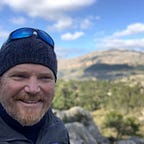The Way of Council
Excerpt from the Worldview Dimension of Gaia Education’s online course in Design for Sustainability
“Ultimately, it is difficult to write about what happens in Council. As is true for other timeless ceremonial forms that are still actively evolving, Council works its magic in mysterious ways. For example, we remember the experience of being with “the ancestors” and the “yet unborn,” during the same Council. Current time dissolved and we had the distinct feeling of being nourished with the wisdom of an ancient circle of elders gathered to make an important tribal decision. Then, a little later we saw clearly that, by our further evolving the practice of listening and speaking from the heart, the future of Council was being seeded for those not yet born who would follow us. The feeling of interdependence of the circle was visceral and carried with it a sense of our inseparable connection with both past and future. The Council seemed to have an evolutionary life of its own — a life whose presence we felt palpably at the time, even though describing it now eludes our powers of articulation.”
– Gigi Coyle and Jack Zimmerman
Council is an ancient way and modern practice deeply rooted in the natural world, spanning many cultures and religions. Here we listen to the whole: the people and the place, earth, water, fire, air — the life spirit in all. This practice elicits an experience of true community, recognizing that each voice needs to be heard, that every person has a gift, a story to share, a piece of the whole.
Council offers a way of communicating that encourages attentive listening, as well as honest and compassionate expression. It makes room for new insights and understandings, wisdom in decision making, and healing of differences. More than a communication tool, council allows us to access collective intelligence and group wisdom, offering a way both new and ancient of guiding collaborative processes.
The Way of Council offers a synthesis of our contemporary understanding of group dynamics with ancient forms of communication that have been practiced in Western, Eastern, Hawaiian, and Native American cultures for many millennia. For As long as we can call ourselves ‘human’ our ancestors have spend time sitting in a circle around a fireplace sharing stories, wisdom, and revelations.
Council is a non-hierarchical form of deep communication where each person is empowered to speak. It’s primary intentions — listening and speaking from the heart — encourage genuine self-disclosure and attentive empathic listening.
In it’s most basic form, the practice of Council is simple. People sit in a circle. This creates a sense of equality. The council guides, or facilitators are also participants in the council. A ‘talking piece’ is passed from person to person in the circle and, one at a time, people speak from the heart while everybody else gives them the gift of their undivided attention, deeply listening from the heart.
The quality of deep listening extended by everyone in the circle to the person holding the talking stick contributes to creating a container of deep trust and openness. This enables to share deeply from the heart and often people find themselves expressing a quality of insight and wisdom that they did not know they had. In these magical moments people speak from a place that is deeply nourished by the collective intelligence and wisdom of the whole group.
Council encourages participants to speak from their own experience, making I-statements rather than speaking in generalities for others. As the practice deepens, participants achieve greater tolerance for different perspectives and greater understanding of the feelings of others. Council can help us to develop our ability to mediate conflict non-violently. It offers a simple but powerful contribution to the creation of a culture of peace and understanding.
One of the places that has contributed significantly to promoting and sharing the practice of council both in their own region and internationally is the Ojai Foundation in California. The Ojai Foundation has brought council to schools, hospitals, into prisons, and into the boardroom of major companies. It has served many community leaders by sharing the practice of council with them and offering training programs to deepen in this practice.
Jack Zimmerman and Virginia (Gigi) Coyle have provided an excellent resource for exploring the many different forms and applications of council in their book The Way of Council. In recent years some of the elders of the Ojai Foundation have helped to train a series of council trainers in Europe and Israel, leading to the creation of the European Council Network.
“The Quality of our Work flows from the Quality of our Relationships.
The Quality of our Relationships flows from the Quality of our Communication,
The Quality of our Communication flows from the Integration of our Mind, Heart, Body, Spirit.”
- Marlow Hotchkiss
…
Note: This is an excerpt from the Worldview Dimension of Gaia Education’s online course in Design for Sustainability. In 2012 I was asked to rewrite this dimension as part of a collaboration between Gaia Education and the Open University of Catalunya (UOC) and in 2016 I revised it again into this current version. The next opportunity to join the course is with the start of the Worldview Dimension on May 21st, 2018. You might also enjoy my book ‘Designing Regenerative Cultures’. You can read Gigi Coyle’s review of the book here.
